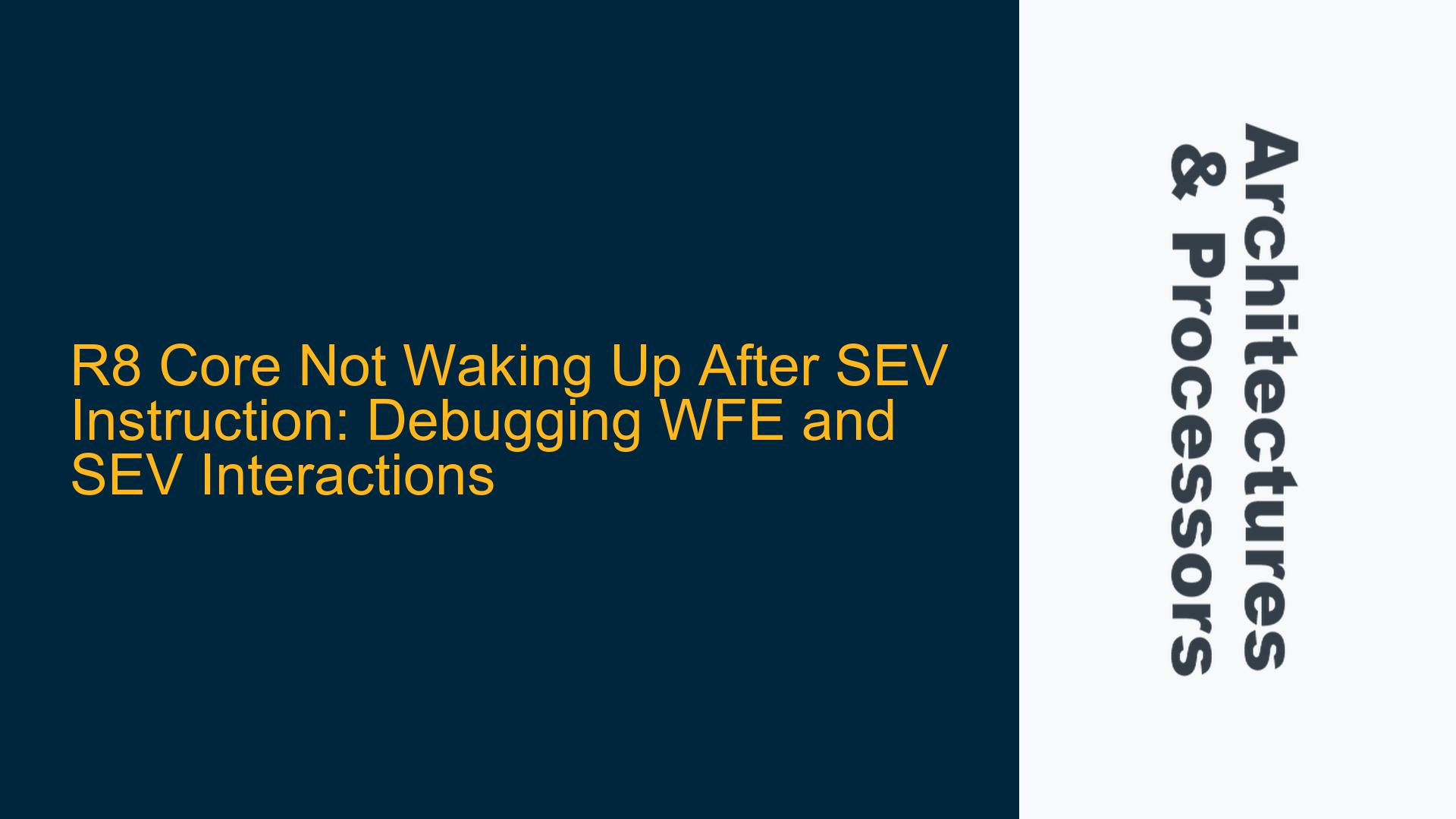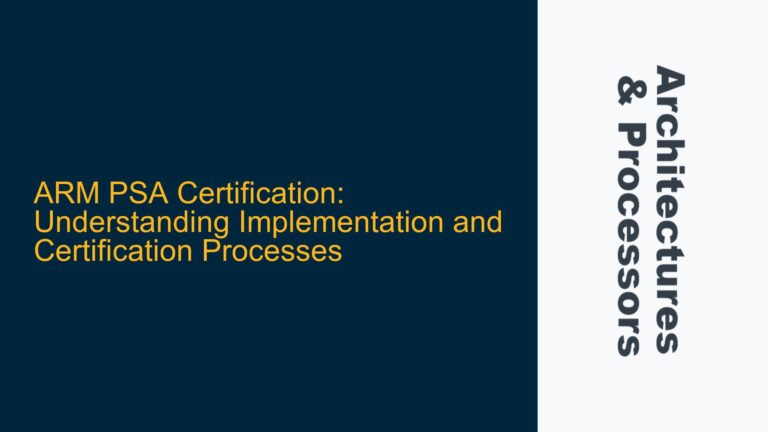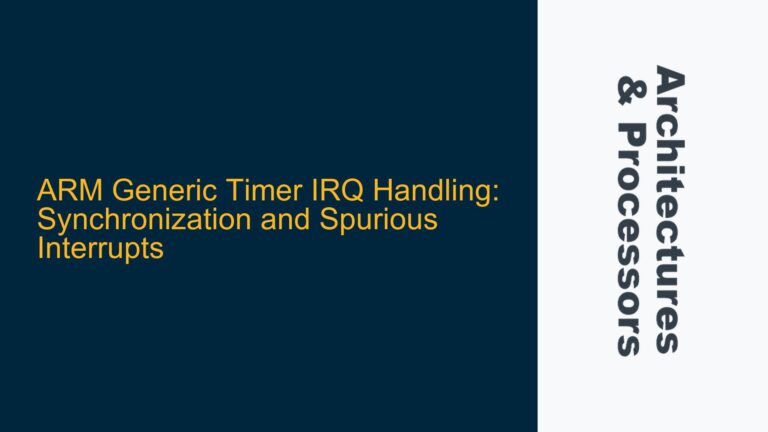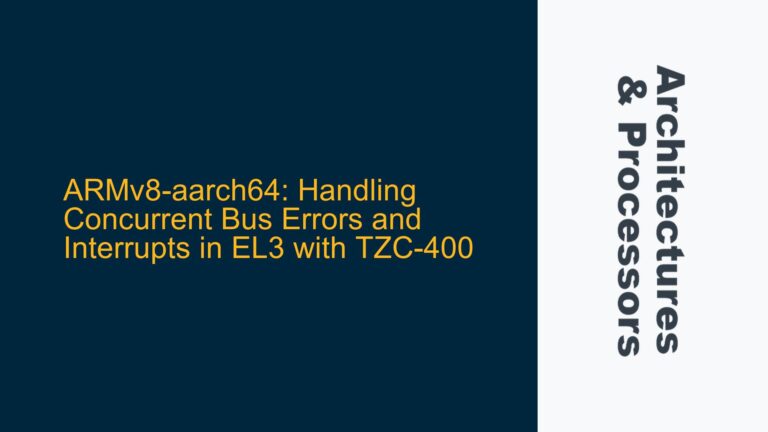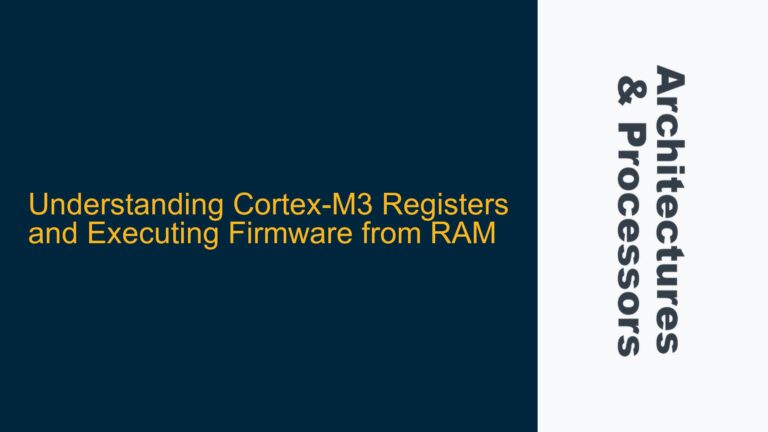Cortex-R8 SMP Core 0 Stuck in WFE State After SEV Execution
In a multi-core Cortex-R8 system, Core 0 enters a Wait For Event (WFE) state while waiting for a spinlock. Despite another core executing a Send Event (SEV) instruction, Core 0 fails to wake up and resume execution. This behavior indicates a breakdown in the expected hardware-software interaction between the WFE and SEV mechanisms. The Cortex-R8, being a high-performance ARM processor designed for real-time applications, relies heavily on proper synchronization between cores for efficient task management. When one core fails to wake up after an SEV, it can lead to system deadlocks, missed real-time deadlines, and overall system instability.
The WFE instruction is designed to put a core into a low-power state until an event occurs, which can be triggered by an SEV instruction, an interrupt, or an external event. The SEV instruction sends a global event signal to all cores in the system, waking them from WFE states. However, in this scenario, Core 0 remains unresponsive, suggesting that the event signal is either not being generated, not being received, or not being processed correctly by Core 0.
This issue is particularly critical in Symmetric Multiprocessing (SMP) systems, where cores must coordinate tightly to manage shared resources and ensure proper task scheduling. The Cortex-R8’s dual-core architecture is optimized for such scenarios, but subtle hardware or software misconfigurations can disrupt this coordination. Understanding the root cause requires a deep dive into the ARM architecture’s event handling mechanisms, cache coherency protocols, and memory synchronization barriers.
SEV Signal Propagation Failure and Cache Coherency Issues
One of the primary reasons Core 0 might not wake up after an SEV instruction is a failure in the SEV signal propagation mechanism. The SEV instruction is designed to send a global event signal to all cores, but this signal must traverse the interconnect fabric and reach the target core’s event register. If the signal is lost or delayed due to interconnect issues, Core 0 will remain in its WFE state.
Another potential cause is cache coherency problems. The Cortex-R8 employs a cache coherency protocol to ensure that all cores have a consistent view of memory. If Core 0 is waiting for a spinlock that resides in a cache line, and the cache coherency mechanism fails to update the spinlock’s state correctly, Core 0 might not detect the change and thus fail to wake up. This can happen if the cache line is in an invalid or stale state, preventing Core 0 from seeing the updated value.
Additionally, the use of memory barriers and synchronization primitives can impact the behavior of WFE and SEV. If the software does not include the necessary Data Synchronization Barriers (DSB) or Data Memory Barriers (DMB), the cores might not have a consistent view of memory, leading to missed events. For example, if Core 1 updates the spinlock but does not issue a DSB before executing SEV, Core 0 might not see the updated spinlock value and thus remain in WFE.
The Cortex-R8’s event handling mechanism also relies on the correct configuration of the Event Register. If the Event Register is not properly cleared or configured, Core 0 might ignore the SEV signal. This can occur if the software fails to clear the Event Register after handling a previous event, causing the core to remain in a WFE state indefinitely.
Diagnosing and Resolving SEV-WFE Synchronization Failures
To diagnose and resolve the issue of Core 0 not waking up after an SEV instruction, a systematic approach is required. The first step is to verify that the SEV signal is being generated and propagated correctly. This can be done by using a debugger to monitor the Event Register on Core 0 and checking whether the SEV signal is being received. If the signal is not reaching Core 0, the issue might lie in the interconnect fabric or the core’s event handling logic.
Next, the cache coherency state of the spinlock should be examined. Using a debugger, inspect the cache line containing the spinlock to ensure that it is in a valid and up-to-date state. If the cache line is invalid or stale, it might be necessary to manually invalidate or clean the cache line to ensure that Core 0 sees the updated spinlock value. Additionally, ensure that the software includes the necessary memory barriers (DSB or DMB) to guarantee that memory updates are visible to all cores.
The Event Register on Core 0 should also be checked to ensure that it is properly configured and cleared. If the Event Register is not being cleared after handling a previous event, Core 0 might ignore subsequent SEV signals. The software should include logic to clear the Event Register after handling an event to ensure that the core can respond to new events.
If the above steps do not resolve the issue, it might be necessary to examine the hardware implementation of the Cortex-R8 system. Faulty or misconfigured hardware, such as a defective interconnect or incorrect clock settings, can also cause SEV signals to be lost or delayed. In such cases, consulting the hardware design documentation and working with the hardware team to identify and resolve the issue is recommended.
Finally, it is important to review the software implementation to ensure that it follows best practices for using WFE and SEV. This includes using memory barriers where necessary, properly managing the Event Register, and ensuring that spinlocks and other synchronization primitives are implemented correctly. By following these steps, the issue of Core 0 not waking up after an SEV instruction can be diagnosed and resolved, ensuring proper operation of the Cortex-R8 SMP system.
By addressing the SEV signal propagation, cache coherency, and Event Register configuration, the issue of Core 0 not waking up after an SEV instruction can be effectively resolved. This ensures that the Cortex-R8 SMP system operates as intended, with all cores properly synchronized and responsive to events.
